#whoo i did it
Text

🦋~I want you to kiss me, I want you to remake me
I want to drown in this moment of captivation~🦋
(I fucking did it dear god that was so many fucking layers)
#princess tutu#ahirue#ahiru#duck#rue#fanart#my art#this was by all means supposed to be a quick shitpost#but then I was looking at the sketch and the flats#and was like “this is bleak. dismal. i can do More”#so i did it for realsies and look how pretty it turned out#it feels good to complete something#i havent done that since like 2020?...21? i dont remeber 💀#and i can't lie i had fun figuring out the shading on the hair and skin#it was very fun#i mightve drowned this in way too many glowy effects though. i tend to do that a lot#but I decidedly do not care look how dope all that glitter is this was so fuuuuuun#if the lighting seems bogus no it isnt and bullshitting the light source is an honored artistic tradition. so#do not @me about anything ever#god tumblr nerfed the image quality so much#i was gonna upload this as JPEG but that looked even worse than this#well whatever. whatever#hitting post now good night IM DONE. 10 HOURS BABY I DID IT ITS A FINISHED ILLUSTRATION WHOO HOOOOOOOO
148 notes
·
View notes
Text
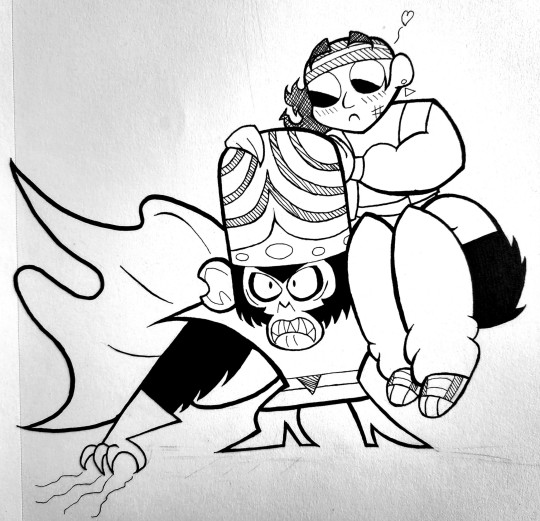
Aaaaaah I know I've been talking abt this art for like 3 days but I FINISHED IT HEEHEE 💖💘💖💘💖💘💖 The thought behind this was Cherry was getting mugged during their walk back to her apartment cuz Townsville be like that, and this is the moment Mojo swooped in to her rescue (How did he know it was happening? He deeeefinitely wasnt spying on them lol) ANYWAYS ENJOY If you want more thoughts look at my tags!! 💖💖💖💖💖💖
[[🧡 Reblogs and comments are all seen and very appreciated!! 🥺 Tag list below the cut, check out my pinned for my taglist form! 💙]]
@absentmoon @ava-ships @bee-ships @beetleboyfriend @berryshipbasket @canongf @clawfull @cloudyvoid @derelictdumbass @dissonantyote @edencantstopfallininlove @final-catboy @flowering-darkness @gible-love-nibles @nagirans @hoppinkiss @hotrodharts @hyperionshipping @iwishihadfangs @iyamifucker @judetama @lex-n-weegie @lficanthaveloveiwantpower @little-miss-selfships @little-shiny-sharpies @loogi-selfships @mandrakebrew @mintpecks @mothfinite @mrs-kelly @nameless-self-ships @orbitingaroundyourlove @nerdstreak @paper-carnation @p-i-t-s @qilinkisser @reds-self-ships @rexscanonwife @rotten--cotton @ship-trek @spacestationstorybook @squips-ship @toogayforthistoday @winterworlds
#my art#💜: loving you's a felony#🍒🧬: emotional processing lag#self ship#oc x canon#self shipping#self ship community#self insert#fictional other#mojo jojo#okay with organization tag outta the way. AAAAAAAAAAAAAAAAH 💖💘💖💘💖💘💖💘💖💘💖💘💖💘💖💘💖💘💖💘💖💘💖💘💖#GUYSSSSSSSS THIS ART WAS SO FUCKING FUN 💖💖💖💖💖💖💖💖💖💖💖#i have NEVER done lining like this before and messing with line thickness was a fucking blast!!!!!#ALSO HATCHING. FIRST TIME DOING HATCHING AND THAT WAS ALSO RLY FUN 💖💖💖💖💖💖💖#and of course oho. ohoho OHOHOHOHOHOHOOHOHOHOHOHOHOHO 💖💖💖💖💖💖💖💖#ive definitely talked about it on the blog before right. the idea of him being sooooooooo protective 💀💖💖💖💖💖💖💖💖💖💖#like whoever the assailant is here is DEFINITELY BOUTTA DIE LOL 💖#i hope i did good on the expressions but i mean i rly love it!!! 😳💖💖💖💖💖💖💖#also the way that cherry's a little roughed up. i like to think that they just tripped trying to get away 😂#like the person mugging them had very little to do with actually causing those scuffs. doesnt change how definitely dead they boutta be 😳#anyway whoo hooooooooo here it is i am so happy with it it was so fun and its making me so 😳😳😳 i hope yall like it too!! 🥺💖🥺💖🥺💖#also last thing sorry for shitty hotel room lighting hrnsnzhf it was all i had to work with but I tried my best 😂💀😂💀
102 notes
·
View notes
Text
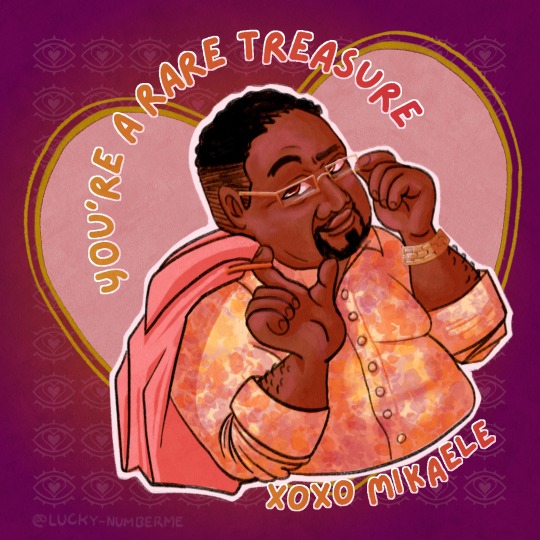


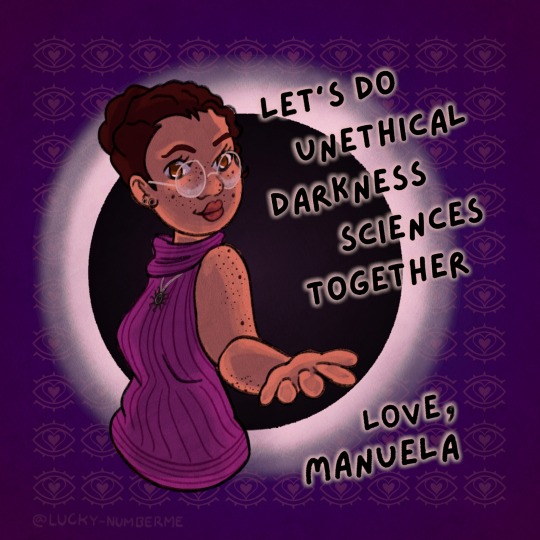
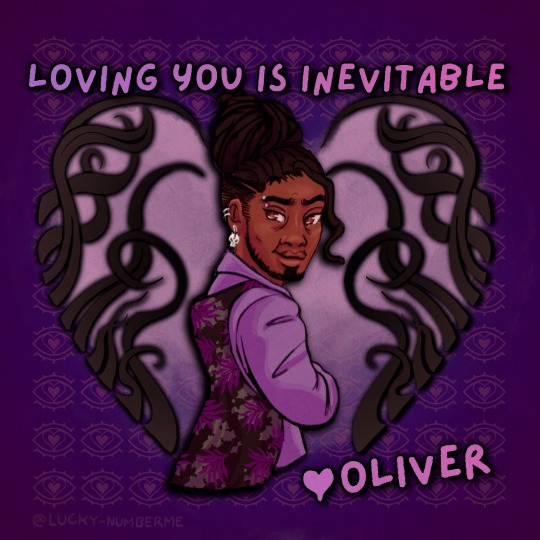

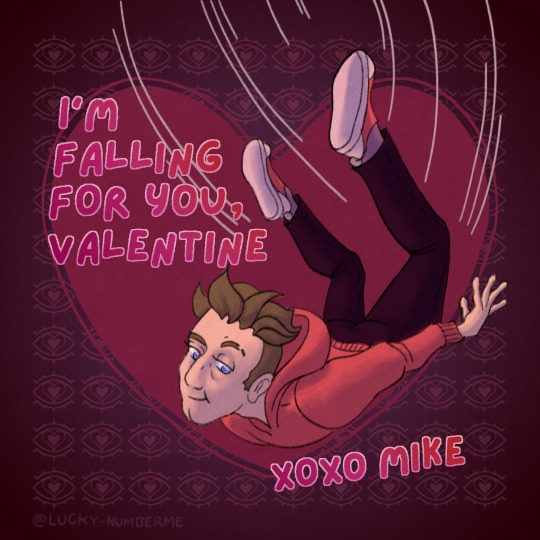


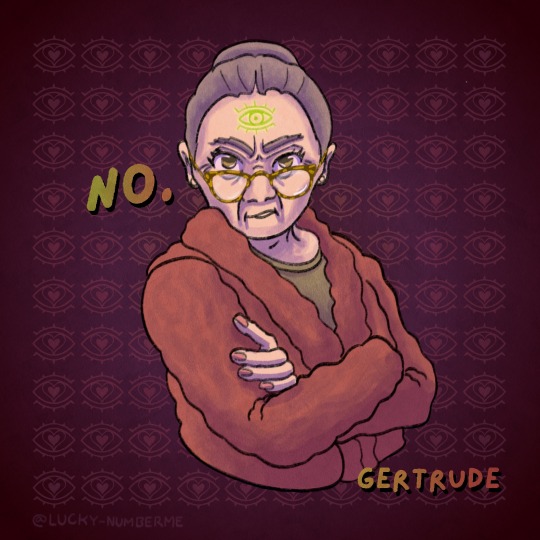
happy heart day from everyone's favorite eldritch office comedy podcast
[ID: A series of 10 Magnus Archives themed valentine cards. They're all done in a cartoony style in rich jewel tones, and accented with hearts.
1) Mikaele adjusts his glasses with one hand while posing with a suit jacket slung over his shoulder. he smiles flirtatiously at the viewer. text reads, "You're a rare treasure Xoxo Mikaele"
2) Jane Prentiss poses inside a cut out heart, winking at the viewer. her hair and dress are flowing, and her worms are numerous. text reads, "you'll never be lonely again. love, Jane"
3) Agnes sits with her hands wrapped around a steaming mug of coffee that is spilling onto her arm. she smiles vacantly at the viewer, the smile not quite reaching her eyes. Text reads "You make me feel normal, Valentine. Love, Agnes"
4) Manuela Dominguez stands in front of a dark sun and holds out a hand to the viewer, smiling sweetly. text reads "let's do unethical darkness sciences together. love, Manuela"
5) Oliver turns back over his shoulder and smiles a little sadly at the viewer. he's surrounded by tendrils of darkness in the shape of a heart. "Loving you is inevitable. (heart symbol) Oliver"
6) Michael Distortion curls lazily in a door frame, a rainbow spiral behind him. text reads "I'm lost in you. (heart symbol) Michael"
7) Mike Crew falls through the air, cocking an eyebrow at the viewer. text reads "I'm falling for you, Valentine. xoxo Mike"
8) Gerry's ghostly form rises out of an open book. They hold a lighter and look up at the viewer with heart eyes and a slight smile. text reads "Burn me up, Valentine. xoxo, Gerry"
9) Helen Distortion hangs upside down from a door frame, pushing herself through slightly. she grins at the viewer. "You make me spiral, Valentine. Xoxo Helen"
10) Gertrude stands with her arms crossed and turns sightly to look directly at the viewer, scowling deeply. A glowing eye is on her forehead. There are no hearts anywhere. Text reads, "No." End ID]
#tma fanart#tma valentines#the magnus archives#magnus archives fanart#tma avatars#why is Mikaele first you ask? bc I have a big gay crush on him. next question#i did this in less than a week which was a Bad Choice bc i am now wiped out. but it's done in time!! whoo#uhh sorry now im gonna tag all of them no more thoughts hidden in these tags. no more honor beyond this place#long post#mikaele salesa#jane prentiss#agnes montague#manuela dominguez#oliver banks#michael shelley#mike crew#gerry keay#helen distortion#gertrude robinson#little museum
888 notes
·
View notes
Text

@keshanflameseeker 's Alenya for GW2 secret santa!! happy new year!!!! she has such a fun design💛
#m#gw2#guild wars 2#sorry for arty rocking#when's the last time i did lineart! or full color! whoo!#alt text
104 notes
·
View notes
Text
EOA1 ==> Media, Agency and the Suburbs in Act 1 of Homestuck




It is April 13, 1959. Mr. Egbert, Sr. has recently made the move out of the city into a newly built house in the suburbs, because clowning isn't paying so well after the recession. His son John hasn't seen his friend Rose since they moved. Staring out the window at 4:13pm and glimpsing nothing but the neighbor's wall, John goes downstairs to catch the second half of a black and white episode of Truth or Consequences, losing himself for fifteen minutes in their world of pranks, hilarity and emotional family reunions. Hopefully for his birthday, his dad will get him that cool new board game and its all-important hours of distraction.
We pick up the daily newspaper, and flip to the funnies to see John's new antics.
(Essay below the cut - about 5k words.)
==> I: John’s Suburb in Historical Context, or: Johntext
During the 1940s and 1950s, mass expansion of the American suburbs was accompanied by a ‘best of both worlds’ promise. Families who moved there could enjoy easy travel to the city via car for work and leisure, but wouldn’t have to deal with the ‘undesirable’ parts of city life, such as noise, pollution, or people from marginalized groups. Suburbs were characterized by detached, single family houses that guaranteed each family their own bubble of space away from neighbors, but also promised a community of likeminded people with whom to form neighborhood associations and PTA committees. Residents could enjoy independence from city governance and increased control over their own living spaces, but anybody who might push back against current social norms would be quietly excluded. Utopian promises and attractive prices encouraged many Americans to make the move, and many of them have never left.
Here in 2009, it’s not uncommon for people to have lived their entire lives in the suburbs - often in a single house. Promises of progress and innovation within households have remained strictly cosmetic, while the values guarding suburban families and communities have changed very little. Although people of color comprise an increasing percentage of suburban residents, white people are still overrepresented. The same is true of married couples’ overrepresentation compared to other family structures. Suburban architecture remains centralized around the car as the primary means of transportation, and the separation of residential from commercial areas. Opportunities and reasons to leave the house are both minimized.
With the growth of the suburbs came increased criticism of their designs and ideals. Their dream of a spacious home for each family has led to feelings of isolation, while the promised communities have primarily formed around churches and strict Christian ideals. Residents lack trust in their neighbors, and as such, children are no longer left to their own devices outside of the house. The suburban goal of easy car accessibility to cities has ended in highway congestion, air pollution and lack of public transport or pedestrian access. And while the percentage of Americans living in the suburbs continues to increase, not everyone has the luxury of choosing where they live - particularly children and teenagers.
Homestuck’s main character John Egbert doesn't directly express a hatred of the suburbs - he seems more conflicted, showing fondness for the tire swing in a kid's yard (p.27), the fireplace (p.50) and the father smoking a pipe (p.74), while also expressing that he feels stuck in his home (p.30, 253), that he avoids his father's company (p.30), and that he feels something missing from his life (p.82). He doesn't seem aware of the source of his emptiness, just that he's always felt it, and we can only guess the source through incredibly subtle context clues, such as the work's title and the way John longingly gazes towards the outside.
It's certainly possible for someone with an otherwise privileged life to feel alienation in the suburbs, but those who differ from the white nuclear family ideal tend to have these feelings heightened, and may be ostracized by the community or threatened into conformity. Similarly, the gulf between John and his dad, and their separate perceptions of that relationship, could be simply generational, or could suggest bigger, unseen differences between them.
One interpretation I and others have discussed is that John is a transgender woman who has yet to actively realize her identity, but knows on some level that she can’t achieve the strict gender expectations of a suburban community. This loss of self-understanding would contribute to John's feelings of absence and lack of control, and strain her relationship with a father who expects her to fit a male gender role.
This might be my favorite possible explanation, but there are lots of others, any or all of which could be true. John being queer in any sense would mean he might not fit into the nuclear family structure of the suburbs as an adult. John being a person of color in an otherwise white neighborhood would visually distinguish him from his neighbors and cause them to judge him based on stereotypes, and if John is mixed race and Dad is white, this distinction could highlight differences between them too, the absence in John's life marked by a disconnection from a culture he's a part of. John being neurodivergent could impact his ability to interact with other people in the neighborhood, or to replicate the rules and performativity of daily life. Single parent family structures are more accepted in 2009 than they were in 1959, but it's still possible that some past scandal involving Dad and John's family life is hanging over them, fresh in the minds of their neighborhood - perhaps one that just like Nanna's death, Dad 'never wants to talk about'. Any of these factors could lead to John being ostracized by his community and mean that even at a young age he didn't 'buy in' to the idea of the happy suburban family.
I believe it is intentional that Homestuck hasn’t defined John’s location more specifically than ‘west of Kansas’. Although research has shown that different suburbs have their own individual characters, critics tend to emphasize their similarities. We’re supposed to think that John would have broadly the same experiences if he lives in Arizona or Colorado, Texas or Georgia, maybe even England or Belgium. The externalities of John’s life are the same as countless other kids in the Western world, not because of John’s choices or even his dad’s choices, but due to the larger structures that organize families into houses, houses into suburbs, and suburbs into sources of constraint.
==> II: If You Love Your House So Much, Why Don’t You Never Leave It?
The suburbs walk hand in hand with advances in technology. The 1950s saw a boom in the sale of household appliances, with devices for cooking and cleaning promising to lighten the housework load for women, and television providing entertainment for the whole family from the comfort of the living room. Various corporations created model homes to display the futuristic properties of their fantastical appliances, promising consumers that in the future, all homes would look just like this. This was a marketing tactic primarily benefiting the corporations - but in some cases, they were successful. General Electric’s ‘New American’ home in Denver featured a dishwasher as early as 1935, and these increased in affordability and domestic popularity across the 1950s and 60s. Disneyland’s Monsanto ‘House of the Future’ boasted a microwave oven. The house opened in real world 1957 but was ‘set in 1986’, and by 1986, one in four American homes owned a microwave. The Westinghouse ‘Home of Tomorrow’ contained the first ever portable radios - six of them, with radio outlets in every room to grant every family member a constant supply of media.
This idea of constant, individualized media consumption may have been the greatest called shot of these houses. In 1959, John would be limited to a handful of TV channels on a fixed schedule, fighting over the tuning dials with his dad, but in 2009 he almost certainly knows the delights of Megavideo on top of having a video game collection, DVD collection and TV on demand service.
Televisions were marketed to families in the 1950s claiming that they would keep families closer, as parents and children alike would want to stay home and watch together instead of going out to separate places, and many parents at first expressed relief at always knowing where their teenage children were, and consequently, being able to keep an eye on them. Television altered the boundaries between public and private space, allowing people to experience a public activity such as a trip to the movies, a performance from a live musician, even witnessing the moon landing, without leaving the home or interacting with strangers.
Increasingly, media is marketed with the promise of interactivity and agency. Television provided a world to passively escape into, but video games allow the player to actually embody a character in that world. They present fantasies of control, of being able to explore a virtual map according to the player’s whims, and offering in-character choices that allow the player to control the narrative itself. Players are compelled by the possibility of media they can customize to their own specific tastes, and media they can master and bend to their will instead of simply observe. In this way, the Nintendo Wii isn’t so different from the fridge-freezer that promised greater mastery over the family’s diet, or the modern microwave oven and its dozens of settings and options for preparing food.
As our society moves from home televisions to home computers and video game systems into an age of portable, all in one smartphones, we and the media become more dependent on each other, and we expect to have access to it more of the time. John Egbert has found connection with a close friend who lives multiple timezones east and stays in regular and real time contact with her. That friendship enriches his life, and wouldn't have been possible without today’s high speed internet and instant messaging services. John’s computer opens up an incredible social world, but - as we’ve seen with Rose losing power - if he lost that technology, he’d also lose that community.
So, advertisers ask, what possible reason is there to leave? Why would you go somewhere mundane, like a park or a youth club, when you could go up on a plane surrounded by dangerous criminals and outsmart them all in time to save your friend? When you can bike down the highways from Missouri to Virginia to save the girl you like from natural disasters? You can be a hard boiled detective, a monster's best friend, a scientist making contact with aliens, an oil magnate turned savior of the world, a FBI agent surgically given the face of a terrorist, and a world leading expert on ghost slime - and you’ll never get dirty, you’ll never get hurt, and your dad will be right in the next room with a constant supply of fresh baked cakes and fatherly affection. What possible reason do kids have to complain, or to feel like anything is missing from their lives, when they can master reality from couches and computer chairs?
John Egbert embodies constant media consumption. Two of his five stated interests are consuming media - specifically movies and video games - and even when he’s not actively watching or playing something, he’s surrounded by media. His room is filled with movie posters, the television in the living room is switched on even when nobody’s watching, and the first thing he does after loading his computer is check for webcomic updates. Even his thoughts are consumed. He’s constantly replaying his favorite scenes in his head, which seems to bring him genuine joy, fixating on the next game he wants to play, and filling his social interactions with references to his favorite franchises. Even before actually entering Sburb’s virtual reality, John already wasn’t present in his material space. He’s digitally transitioned from what Lynn Spigel describes as ‘the home address to “home page”... computer generations rather than genders’.
==> III: Kids These Days Just Don’t Respect The Cultural Idea Of Childhood We Created For Them
The suburban home loves technology, but the reverse may not be true. A significant amount of mass media depicts the suburbs as the place where creativity and individuality go to die, reflecting the cultural criticisms instead of the promises. Some of the earliest sitcoms, such as I Love Lucy and The George Burns and Gracie Allen Show, predated widespread criticisms of the suburbs and presented an idealized suburban life. These soon gave way to the ‘fantastic sitcoms’ of the 1960s, including Bewitched and I Dream of Jeannie. These shows have implausible premises, featuring supernatural creatures, aliens or futuristic settings while still depicting mundane suburban realities. This juxtaposition opened up new questions about the real world, asking why we exclude certain people from communities and playing with the strict roles within the nuclear family.
Media aimed at young people often presents a world where kids are in control and regular power structures are inverted. 1950s and 60s comic strips aimed at kids, such as Peanuts and Dennis the Menace, were also set in the suburbs - but an idealized version of the suburbs where kids could roam freely, not confined to the home and able to disobey the instructions of adults without consequences. Some parents restrict these from children, not wanting them to ‘get the wrong idea’ and copy the bad behavior they see in comics or on TV. Popular music is a site of rebellion amongst teenagers - The Kinks in the 1960s, Talking Heads and Bruce Springsteen in the 1980s, Green Day and Blink-182 in the 1990s and 2000s, and uncountable other acts have put criticisms of suburbia to music and created a cultural dream of escape by getting on the road, joining a rock band and never putting down roots again.
In a time of rapid technological change, parents fear the impact technology and new media will have on their children, partly because they didn’t grow up with those technologies themselves. Television was feared because it gave children access to knowledge, different worldviews, and the realities of the adult world that parents wanted to keep from them, lessening parents’ control over their kids. It was also feared for its all-consuming nature, for making children want to watch constantly at the expense of homework, chores and family meals. More recently, video games have been feared for these same addictive properties, and for the belief that they negatively impact social interaction and cause increased aggression and violence.
But John isn’t like other teenagers. His taste is striking for being exclusively movies that reinforce ideals of the nuclear family - usually suburban, with the exception of New York City-based Ghostbusters II - which suggests he doesn’t only want to escape his current life, he wants to legitimate it to himself. John’s movies end with family reconciliation, not with the kids getting one over on the parents. If John feels like he doesn’t fit into suburban ideals, he can try to connect with them by seeing them through the eyes of a character he likes. In a world where John’s primary source of agency is the media he chooses to consume, he could easily choose to reject his unsatisfying life altogether and live vicariously through outlaws and exiles, getting really into Westerns or Ferris Bueller’s Day Off, but he doesn’t. He chooses characters who are fundamentally conventional, despite their rough edges, suggesting he’d really like to just fit in and be content with what he has.
Sburb, however, is the game that actualizes parents’ worst fears, inverting the power structures of the house, giving Rose and John dominion over the space while Dad - formerly both the breadwinner and the homemaker - has been relegated to an unseen location. John has access to a physically dangerous inventory system and a strife specibus that encourages him to solve problems by hitting them with a hammer.
Media promises us an escape, and it undoubtedly has the power to teach us and open our eyes to new perspectives, but in many cases provides nothing more than a filter over our lives. Encouraging people to live in a state of distraction, a TV show or video game gives us an easy way to hide from reality. People look for a new technology to solve their problems instead of a social solution, placing parental controls over their children’s television and internet usage instead of having honest conversations among families about media consumption, and designing security systems to keep ‘undesirable’ people from trespassing in middle class neighborhoods without questioning why those people are excluded from suburban society in the first place.
==> IV: There’s A Fine Line Between Fantasy And Reality And My House Is Built There
In the 1935 movie Murder by Television, a money-hungry scientist manipulates the interference between telephone lines and television broadcast signals to create the ‘death ray,’ and murder somebody on the other side of a television screen. Released less than a decade after the world’s first television broadcast, this movie demonstrates our cultural obsession with the boundaries between electrical and real space, and our dream of making those boundaries permeable. The 1950s presented TV families (such as the Nelsons from The Adventures of Ozzie and Harriet) as normal families whose lives just happened to be televised, but who behaved the same way on and off screen to the point of forgetting the cameras were rolling. To this day, reality television such as Big Brother and The Bachelor promise to show us contestants’ authentic private lives, and even when we as viewers know the show is staged, we choose to buy into the fantasy.
More recently, 1998’s The Truman Show literalizes our dependence on the media, its ubiquity in our lives, and the impact this has on our personal relationships by showing a man whose whole life has been orchestrated by a TV production company that broadcasts him 24/7. Through a lucky accident with a time portal I obtained a copy of 2023’s Barbie, in which a plastic doll lives the dream life promised by her marketing, but starts thinking about mortality and the ‘real world’ when her owner’s mother starts drawing pictures of her with typical adult problems.
In both of these movies, the characters are happy until they are forced to confront the constructed nature of their worlds. By understanding the production and design processes controlling their lives, they become disillusioned with the simulation of perfection and begin searching for something more authentic. Even though Truman and Barbie both escape synthesized worlds and achieve full human agency, their endings are bittersweet. Their ‘escape’ lands them in present day Los Angeles, with all the social constraints, local mass produced suburbs, and constant diet of blockbuster media that this implies.
Blurring these boundaries is an effective advertising strategy as well as a narrative one. Adverts invite players to ‘become’ the main character of a video game, such as a Kid Chameleon promotion inviting players to ‘change personalities faster than they’ll change helmets’ and ‘transform’ themselves into a variety of mavericks. A Mortal Kombat arcade machine advert showed real men bursting out of the machine to attack the player. Promotions for The Sims 2 featured real photographs of people with the Sims interface added digitally, presenting the controllable Sims within the game as more than just pixels.
Following in this grand tradition, Sburb takes the permeable boundary between electrical and real space and smashes a meteor through it. Sburb answers the question of ‘can technology transform our society?’ with a 'yes' loud enough to shake the neighborhood houses from their foundations. Sburb represents the greatest and most utopian promises of technology, as well as the worst of our cultural fears around it.
The appeal of Sburb as a game is that it promises teenagers control over their lives in a world where they’re otherwise powerless. It’s a way to speedrun growing up - alchemy mechanics offer the chance to manipulate space and create all the material goods the player wants, but the game also bestows responsibility for tackling a crisis, for maintaining the home, perhaps even saving the world. And the players who are going to want this badly enough to fight through the impossible challenges Sburb presents are the kids who really can’t wait, the ones who aren’t doing well, and who feel trapped enough in their everyday lives that they would risk it all on an experimental technology to escape.
In truth, many scholars challenge the concepts of interactivity and agency in video games, arguing that these are players’ perceptions and not their realities. Games invite players to participate in the creation of art, but the relationship is never equal, with the creators always having the final say on exactly how much free will the player is allowed. Even a game that aims to be open world and allow for as much free play as possible is bound by the limitations of processing power and how many options a human can reasonably write and code for.
Sburb also puts restrictions on its players. Most likely, there are limits on what objects can be created via alchemy, and Sburb would likely restrict any item that could be used to work against the game. Players being controlled by commands which are interpreted by a computer also ensure that only commands coded for in the game are transmitted to the player. When a command is incorrect, the narrator steps in to help the player (p.253). And so far, the game has dramatic ways of keeping John on a very linear path - first starting a clock so he had no choice but to focus on stopping the meteor, then cutting him off from the world so that he has to stay in his current location. It’s impossible to have agency while living within a game that can and will end your life with four minutes and thirteen seconds of notice.
The ‘homes of tomorrow’ discussed at the start of part II were designed as sentient spaces, responsive to their inhabitants and able to almost anticipate their needs. John Brehm said about MOMA’s 1999 Un-Private House exhibition, ‘one can prepare a meal with the help of a virtual chef from a favorite restaurant and have dinner with a virtual guest or friend through the liquid wall’ and suggested that the house was ‘an extension of the body or a transparency of the mind… that both protects and transcends the limitations of the body’. In 2000, the Microsoft Home in New York City showed a future where people could control the lights, thermostats, security systems and stereos directly from their phones, even from another location. The home of tomorrow promises it can be anything its owner wants it to be, without questioning the idea that the privately owned, individualized home should exist and be desired.
Of course, the houses of tomorrow are always singular, prototype homes built with no thought of neighbors and community, but perhaps sacrificing a whole neighborhood to build the perfect home is a tradeoff some people have to make. Far from the static, impersonal houses of the suburbs, Sburb allows players to create their dream houses, offering bigger bedrooms, additional floors, and an endless void to throw your father’s harlequin statues into. It’s another technology that offers transformative potential for the family home, but is ultimately still driven by it, forming an individualist utopian bubble within a larger, far more conservative and restrictive structure.
==> V: If I Die, I Wanna Die In The Suburbs
The remote control, the video game joystick, and the Sburb alchemiter all tell us we can master reality by mastering technology. If that’s the case, then John still has to master technology. A shattered window from stack modus failures and a desktop littered with enraged programming files show us just how far John is from mastering either of these things.
John’s lack of agency goes far deeper than being trapped in the suburbs. His simple choice to pick something up and put it down is controlled by external agents. Though he can choose to escape his father in the kitchen by going to his room, a variety of screens will follow him and keep him in his own personalized panopticon. Rose’s mastery over the cursor means that John can’t guarantee the objects in his room will be where he left them, and even John’s thoughts are surveilled, interpreted and transmitted outwards by the narrator.
The USA PATRIOT act of 2001 expanded the US government’s legal rights to monitor electronic communication, and the early 2000s saw increased covert network surveillance by governments and private corporations alike. John’s technological illiteracy means he probably doesn’t know how to use a VPN and might not have known as a kid that his internet activities weren’t private, but in Act 2, inside Sburb, he begins to realize. Just as parents fretted at PTA meetings, John’s media has allowed him to eat from the Tree of Knowledge and put an end to his carefully constructed childhood, all on the cultural milestone of his thirteenth birthday.
Sburb has compounded the problem of John being surveilled and puppeted, but didn't invent it. The first 136 pages of Homestuck establish the meta-narrative restrictions on his life, from his inventory system to his being guided by commands, before he installs the game. There are layers of control over John’s life that he’ll need to break through one at a time. The first will be acquiring the Sburb server disc, which will give John greater power within Sburb, and the ability to use the full extent of its abilities. The second will be escaping the game of Sburb, which could be accomplished by simply winning the game (like in 1995’s Jumanji), or by using some kind of cheat or glitch to break out of it (2003’s Spy Kids 3: Game Over), but either way John will need to master the game mechanics.
The final layer is Homestuck itself, and unfortunately for us, John escaping the player and narrator’s influence over his life would almost certainly mean the end of the comic. But in Homestuck the Earth is already being destroyed, and being a webcomic that doesn’t have the constraints of a two hour Hollywood movie, the story doesn’t have to stop at the level of escaping the simulation. It has the chance to go a layer further, and imagine a world where John and his friends are able to enact real and meaningful change.
John has clearly had an emotional dependency on media for a long time, and now, he has a physical dependency too. Sburb is the thing keeping him alive, and his only hope to save the rest of the world, but he’s not alone in seeing popular media as a sacred text necessary for his existence. Smethurst and Craps point out that the player reacts to the game as much as the game does to the player - if anywhere, agency can be found in players’ interpretations of a game. Increasingly we rely on fiction to shape our politics and our worldviews, while also reading texts at a surface level. While media itself is insufficient to give us agency, media literacy is a big step towards asking questions about what restricts our agency, how, and why. The way John discusses movies now isn’t too in depth, with reviews like ‘the applejuice scene was so funny’ and ‘cage is sweet. so sweet.’ But in a story about becoming part of a video game, media literacy could be a very powerful tool for John, and he could come out of this as a genuine movie critic.
==> Conclusion
While Homestuck is a distinctly modern multimedia experience, it exists in a much larger tradition of media that criticizes the suburbs, and depicts the fantasy of escape for young people. Like other metafictional works before it, it handles these themes self-reflexively, showing its main character combat the horrors of the suburbs directly, instead of depicting a fantasy where problems do not exist.
Based on its first act, Homestuck is a story about John Egbert’s quest for agency in a world that constantly tries to restrict it. John’s life so far has been defined by the suburbs, by a single but unremarkable point in space that he’s been trapped in for the first thirteen years of his life. John is both physically confined to his suburban neighborhood, and socially confined into being the ideal of the middle class all American boy that has been presented as his only option. John’s taste in media reinforces the ideals of his society, meaning he has yet to question the status quo of his existence or examine the source of his depression. John is also controlled directly by his server player, the Homestuck players, and the narrator.
John’s experiences playing Sburb show us that while the escape media provides for us is real and can change us in meaningful ways, it can only solve the first step of the problem - and isn’t without its own risks and drawbacks. In order to truly develop agency, John will need to question the existence of the suburbs themselves, and not only his placein them. He’ll also need to - at some point - quit the game, return to reality, and use the skills he’s learned in the game to develop mastery over both the physical world and the story itself.
==> Sources
I wrote this essay after reading Lynn Spigel’s excellent essay collection ‘Welcome to the Dreamhouse: Popular Media and Postwar Suburbs’ (2001), which I would highly recommend.
Full bibliography
Filmography
#homestuck#john egbert#eoa1#milestone#analysis#whoo BOY did this take longer than i hoped!#but this is discussing some themes that im hoping to return to lots if they keep coming up throughout homestuck!#chrono
49 notes
·
View notes
Text
ok but like dan talking about where they could take the channel next, whether they keep it casual or more professional stuff or whatever people want I don't know if he realises just how much we dont rly care what they do lol... like they could do some of that, all of that, or literally NONE of that and we'd still stick around like cockroaches lol
& like I know a lot of phans DID leave during the hiatus, but I also know that a lot of us (myself included) continued watching their vids regularly (I have probably seen dan playing outlast alone in the dark like twice a year since it came out lol) like @ dip and pip we are ride and die for whatever shenanigans YOU guys wanna make lol
#dan and phil#phan#also them saying dystopia daily was too niche like whoo caressss??? /i/ loved it & i know loads of others did too#i think both of them get kinda caught up in their heads worried we wont like the things thry do or say#but like babes we WILL love it lol i can assure you#like there are so many people who genuinely loathe mukbangs but are STILL gonna watch that vid 70 times because it's dnp lol#(this is also directed @ myself btw cos i too am often waay in my head over the things i create rip...)
25 notes
·
View notes
Text




Patches and printing!! I want some colourblend floss in this purple blue on the rails.
Playing around with carbon paper tracing cause I didn't want to sketch direct onto the lino. I'm editing the skull, the weight on it just isn't right.
Watched Alien 1979 after going to see Alien Romulus during the week; I give Romulus a firm 6/10. Massive points off for an obvious reason, and lack of emotional investment in characters - but an alright space-y monster movie.
#I won't spoilers in the tag either but Whoo Boy i didn't like the [Posthumous Hologram of Prince Analog] included#It did /not/ waste time Showing Monster tho and as your local Wey-Yu fan I must root for The Company#Anyway idk about hard-edge patch over multiple cloth ones but I think once I start adding more to other spots it won't stand out so much#battlejackets#linocut block printing#diy punk#patches
19 notes
·
View notes
Text
more
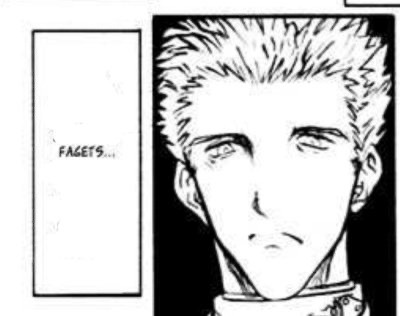
#ran out of tags LOLLLL#and then .at least on fords end . be able to witness the moment of collapse . in which all his ‘righteous’ feelings r sucked out like a#vacuum or some star collapsing on itself bc not only is he like . having to come to terms w his own flaws#and the insidious like . stomach churning guilt associated w that but also the panic and fear (realized#w the portal or bills deception) into looking outwards and having that silent ‘oh’ moment where its like yeah#thats why he left . why wouldnt he#GRAAAAA LIKE I WANT DESTRUCTIONNN I WANT THINGS 2 FALL DOWN SO HE CAN FINALLY REBUILDDD#let me innn😭😭😭😭💥let me in to the self reflection those thirty years😭😭😭💥💥💥💥💥#who did you meet that reminded you of himm😭😭😭who wronged u in similar ways who gave u a reason to be betterrr whoo what did you see#and when you finally came back what did u FEEEL .. and dont lie and say there wasnt that wisp of nostalgia laced arnd ur heart#girl…..talk to me focus on me u know me u know these things#stanford pines#gravity falls#sry for taggingn these i need it for my own blog i prmmy i need to reference this . i will#ok im back bc i read fords end snd i want to rip my hair out bc fiddleford has such good ‘collapse’ imagery too#like we liteally got the soc of the blind eye videos . HIS DOCUMENTSRYYY#oohhhits rly over for us (me) now (and stanford and fiddleford.and stanley bc i feel bad excluding him💔)#only talking ab ford bc i need a reason to connect it to stan bc im sick in tbe brain and i need the familial conflict aspect too#but fidds .. ur misery does not go unnoticed by me ‼️#anyways. ik i said idc if they didnt get back together but the beauty of multiplicity is also liking the idea#HAHAHAHAHAHHAHAHAHlike whenb im over the conflict im like dude they went through so much tgether it must be nice to find urself in the#familiarity again. uugughh.AUUUH./
14 notes
·
View notes
Text
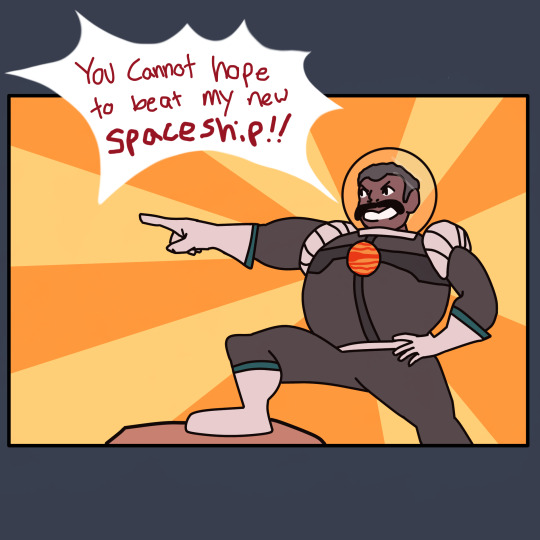
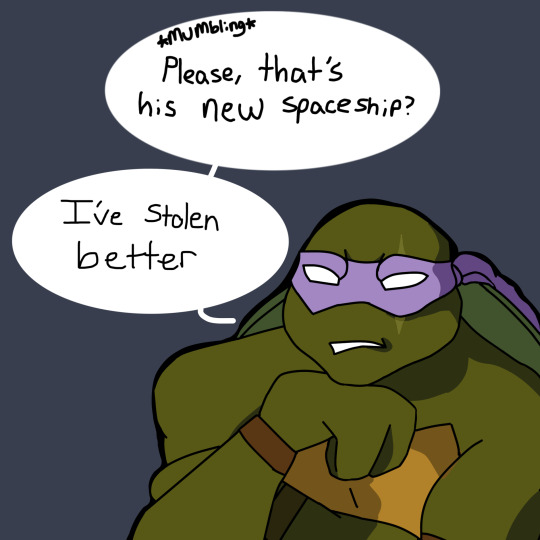
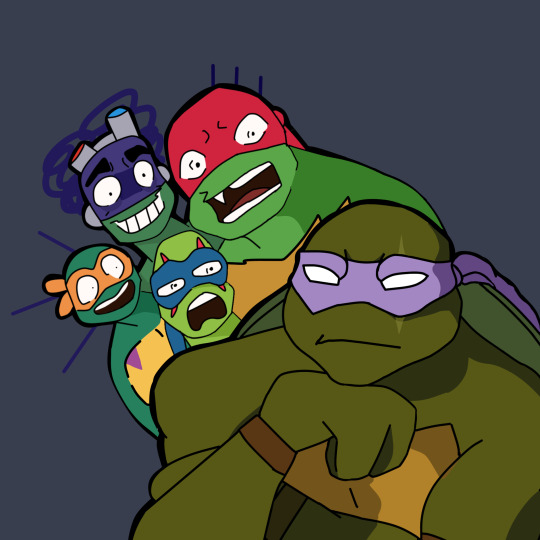
This is for @bluepeachstudios ‘s Ghost in a Shell. It’s really good you should read it.
I looked at exactly one picture of Jupiter Jim and went “yeah this should be enough to draw him.” I will not be answering if it actually was
Have some bonus content under the cut!


And sketches


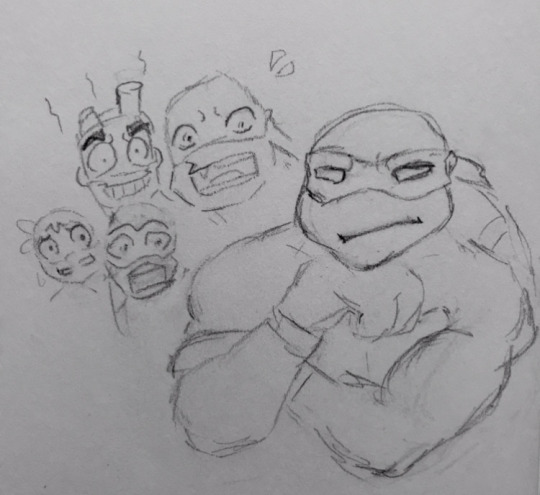
(I love any character who can say “I don’t want to go back to prison” it’s like the funniest thing to me)
#i don’t know what compelled me to hand write that text. it’s not very good#we just don’t do things the easy way here. that’s why I render with an app on my phone. i don’t believe in simplicity#i had a plan for a lot more full body shots but then I couldn’t find any good lair references so I decided to screw it#I’ve never drawn rise characters before. this is my first time drawing them and expressions wow#I’m not very good at style copying and my default is so much rounder than rise is so that was just a woof#i should say all text in these shit posts aren’t canon at all. you can figure out where they likely take place yes#but they never show up in story#just a little fyi incase anyone decides to check it out#the entire inspiration for this post was just watching 2003 and going#WHAT DO YOU MEAN THEY DID THAT??#ghost causally dropping the most wild facts about his life has like endless shit post potential#yeah I went to space. stole a ship. went to jail. aided a fugitive. held a dictator at gunpoint#and folks that’s just one arc. go watch 2003#i debated making angst as it is likely more currently topical but I’m a shit poster at heart#chapter 29. how we feeling boys? I’m actually doing rather well. i think just the fact the build up is over and I’m so tired I no longer#have emtions I’m just pumped for the next chapter whoo!#i started to lose mojo very fast while doing this but I wanted to finish today so I did. i hope it’s not too obvious#yeah anyways go read ghost in a shell#go watch 2003#go read ghost in a shell#i’m gonna go to bed now#ghost in the shell#teenage mutant ninja turtles#tmnt 2003#tmnt 2018#fan fiction recommendations#fan art of a fan fic#rottmnt#rise of the teenage mutant ninja turtles#teenage mutant ninja turtles 2003
129 notes
·
View notes
Note
I would love to see you draw a scene from my rewrite!
Any scene that makes you feel inspired to draw it at all, can be between Asha and Aster or between Asha and the royals or Aster with the royals, whatever you feel more inclined to
(I’m kinda bad at being specific with art requests because I wanna make sure the artist is drawing something they wanna do lmao)


Hehe I had fun with this
This is a scene from “Kingdom of Wishes” Chapter 12– Magic Pencil btw 👍
Notes under the cut
So I was reviewing the official designs for Asha and Aster and realized I was drawing Asha’s hair wrong. Oops. So I drew her “correct” hair in her past version. Amazigh girls usually get their first tattoos during puberty, that’s why I didn’t draw Asha with hers yet.
Also I know Aster didn’t conjure up a little Asha in the story, but I wanted to draw past Asha. Got any guesses from where I got little Asha’s outfit from?
The glowing eyes of Aster’s… yeah they look a bit creepy. Idk. It’s a cop-out for drawing hands bc they are the worst Disney villain ever, so this way I don’t have to draw hands
#saph doodles#did a bit of a more stylized take on aster’s hair#idk if it turned out good#tried a different lineart color for him too? since he’s in “sketch form”#dunno if i’ll be doing it in the future#also whoo a lot of word dump#probably should’ve broken it up but I didn’t want two full pages#could’ve done the whole scene where aster tells asha he knows her childhood but. i have to study. so#haha don’t expect this level of detail for all the asks i was just hyped for this one#also it had characters I know how to draw#sorry magnus you are terrible#(to draw. also your personality. but mainly terrible to draw)#wish#wish disney#wishverse#disney wish#wish concept art#wish star#asha and starboy#princess asha#asha#asha wish#wish asha#asha x star#star x asha#the kingdom of wishes fandom#the kingdom of wishes au#kingdom of wishes fic comic#the kingdom of wishes#kingdom of wishes
46 notes
·
View notes
Text
To be trans is a curse. Sometimes I wish I was born in a body I'd be comfortable in, or wish I could make myself comfortable in the body I'm in now. Either of them. Anything to get out of this state I'm in now, where I'm holding my breath pretending to be someone I'm not, and the alternative is to breathe and mourn myself at the same time. To mourn the past self I killed. Or maybe she never existed. Or maybe I still am her, just all grown up and twisted into something unrecognizable. To be trans is something to be ashamed of, an ugly part of myself to hide from everyone who loves me. Even if they'll love me when (if) they find out, it doesn't matter, I can't love myself. To be trans is to hate myself, to probably hate myself forever. To be trans is to wonder what I did wrong, to apologize to everyone I care about and to try and do better, but I can't do better, because to do better is to not be trans, and I can't not be trans.
To be trans is to be a gift. Sometimes I think of how blessed I am, to be able to create my own path, to leave my old body behind and sculpt a new one. To be trans is to fight and fight and survive, and take a deep breath when the battle is won. And to be trans is to mourn for what I've suffered, to mourn for those that didn't survive these battles, but to take a deep breath and move forward regardless. To be trans is something to be proud of, something to be hidden only because it is too special to break, but something to treasure. Something to share, when I'm ready. To be trans is to live without apology, because my happiness is more important than anyone who wants me to hold my breath and pretend to be someone I'm not. To be trans is to try and do better, and the best way to be is myself.
To be trans is a gift and a curse, and both are true. I hate it and I love it. I'm ashamed and I'm proud. Transness contradicts itself, because to be trans is to be me, and I am filled to the brim with contradictions.
#did i write this while listening to mourners prayer on repeat? you can't prove anything#trans#gender shit#i'd be lying if i said transness was all good and i never wished it away#but it wouldn't be true if i said it was all terrible#it's both. contradictions whoo
170 notes
·
View notes
Note
Can Resh’an and Specter kiss? I think they should kiss. They deserve a kiss please


#sea of stars#shovel knight#neoyi arts#specter knight#that's not quarble fyi that's his cousin uhhhh quarkball#meanwhile specter's dead husband watches from the afterlife and is all “whoo you go my handsome goth husband kiss that mummy wizard man!”#I don't know what aephorul did to piss off resh'an this time: maybe he forgot to put a damn coaster on his nice coffee table again#aephorul: gonna fuck around and find out with the literal grim reaper: round 2
18 notes
·
View notes
Text
pinning someone down and they're struggling against you and then they hit you with the dom stare, and so you don't really want to let go but you're excited to see what will happen so you loosen your grip a little bit and they say "you're loosening your grip" and you say "yeah i wanted to see what would happen" and they hit you with the "don't let go" with the fucking dom death stare look in your eyes so you have no choice but to obey and then they spend the rest of the time criticising you and making you readjust your grip ughhhhh
#dogbone#asexual kink#fear kink#this is the same fucker who gripped my leg with theirs and uhhh#told me how entertaining my reactions were#bro gripped my chin with their hand#and when that got a reaction out of me#went#ooooooh im good at this!#in like a delighted tone#like#did you think you were bad?????#why are you surprised??????#we went to a concert this weekend#and during the opening band#there was a lyric that said 101 dalmations and i still want that one dog#and she tilted my chin up with her finger and made me look at her during it#and uhhhhhhhhh#it bluescreened me#it wasnt this weekend actually it was yesterday#i lied#sorry beeg bark nation#im like high as shit rn#and whoo boy#kink and weed are a beautiful beautiful combination let me tell you#monster kink#t4t nsft#listen man#excellent day to be a monsterfucker head over heels in love with a monster#sometimes i worry that she secretly hates me and then she pulls shit like this
22 notes
·
View notes
Text
had a lovely pride and at the end someone ran up to me and gave me a homemade aro bracelet which they were apparently trying to give to all the aro people there and so that was like the sweetest thing ever, shoutout to that person
#mine#including them i think that is three aro people total i saw#i sat through parts of the parade so i could have missed someone when i couldn't see#personal#one of the other aro people was in a float with a sign like not all love is romantic#or something#i waved my flag at them and their float neighbour noticed and pointed me out and we waved our flags at each other for a minute there#that was also nice :)#and all the trans stuff was lovely#i forgot my pronoun pin that was a whoopsie#but i did get they/themmed the only time i was gendered by someone there so guess i was androgynous enough whoo
137 notes
·
View notes
Text

Variant cover for Moon Knight (Vol. 9/2021), #25 by Frank Miller.
#Marvel#Marvel comics#Marvel 616#Moon Knight vol. 9#Moon Knight 2021#moon knight comics#let’s get this other bread#Moon Knight#Marc Spector#warning: personal feelings/opinions inbound because whoo boi do I never miss the opportunity to rag on Miller#generally#what is this dude’s problem???#I d o n o t c a r e if The Dark Knight Returns revolutionized the comic book industry#was it really for the better what he revolutionized the industry into???#the islamophobia alone is already an unforgivable offense but I simply cannot forgive All Star Batman & Robin the Boy Wonder#or the fact that the dude is seemingly unable to write a comic unless it contains a woman being backhanded/derided#I was going to say I remember really enjoying Peter Parker: The Spectacular Spider-Man (Vol. 1/1976) no. 27#but then I remembered that Miller just did the pencilling for that while it was written by Bill Mantlo#anyway I had a lovely time at a local comic book store yesterday (where I !!! managed to snag among other issues#the last copy of MK’s hellfire gala variant!!!) chatting with the shop owner about how he cannot for the life of him get this variant#off of his shelves while everything else sells out#anyway sorry y’all I try not to harbor any ill will towards particular writers or artists or I try to stick to#‘this particular artist’s/writer’s work just isn’t to my taste’ but#…this is decade’s worth of evidenced behavior yo
77 notes
·
View notes
Text

Day 364- Art Summary! It was a lot of fun looking back through the whole year and finding my favorites.
#honorable mention to days 23 58 62 77 91 97 133 157 180 201 208 223 252 257 266 282 287 311 314#324 (the boyfriend part was genuinely a joke I did not expect Martyn to get involved)#328 334 336 341 345 347. Whoo okay didn’t expect that many honorable mentions but they’re the ones I remember having a lot of fun making :#daily-pp#art summary#July was a harrrrd month I could barely do anything bc I was so busy that was basically the only thing that wasnt a screenshot.#not that i dont like it just that there was barely anything july/august
36 notes
·
View notes